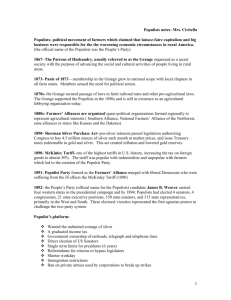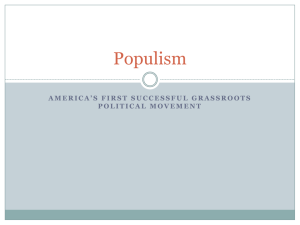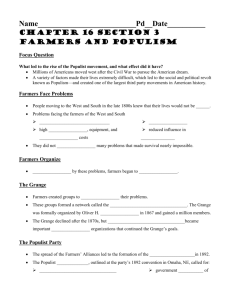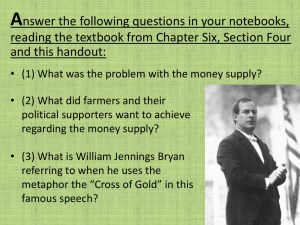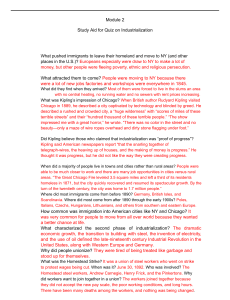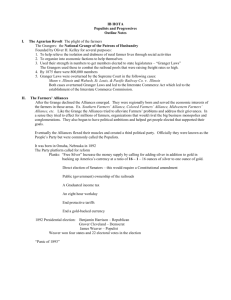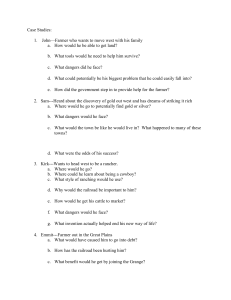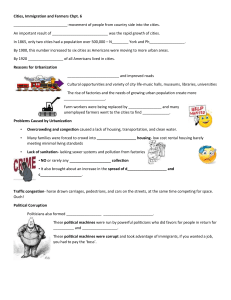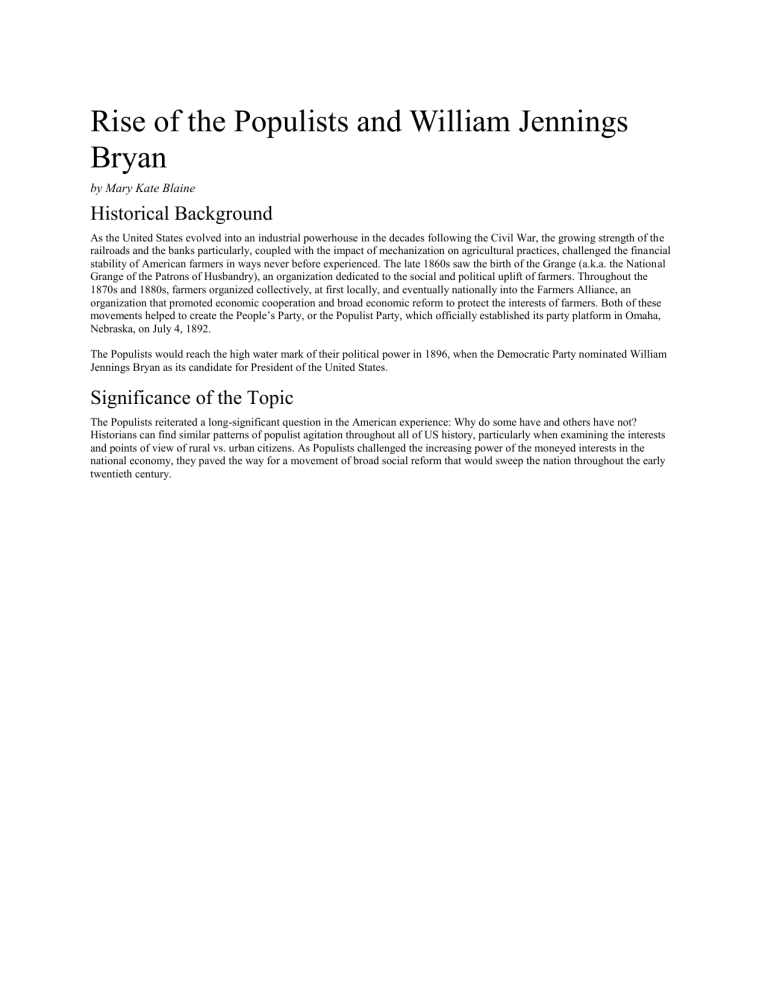
Rise of the Populists and William Jennings Bryan by Mary Kate Blaine Historical Background As the United States evolved into an industrial powerhouse in the decades following the Civil War, the growing strength of the railroads and the banks particularly, coupled with the impact of mechanization on agricultural practices, challenged the financial stability of American farmers in ways never before experienced. The late 1860s saw the birth of the Grange (a.k.a. the National Grange of the Patrons of Husbandry), an organization dedicated to the social and political uplift of farmers. Throughout the 1870s and 1880s, farmers organized collectively, at first locally, and eventually nationally into the Farmers Alliance, an organization that promoted economic cooperation and broad economic reform to protect the interests of farmers. Both of these movements helped to create the People’s Party, or the Populist Party, which officially established its party platform in Omaha, Nebraska, on July 4, 1892. The Populists would reach the high water mark of their political power in 1896, when the Democratic Party nominated William Jennings Bryan as its candidate for President of the United States. Significance of the Topic The Populists reiterated a long-significant question in the American experience: Why do some have and others have not? Historians can find similar patterns of populist agitation throughout all of US history, particularly when examining the interests and points of view of rural vs. urban citizens. As Populists challenged the increasing power of the moneyed interests in the national economy, they paved the way for a movement of broad social reform that would sweep the nation throughout the early twentieth century.

